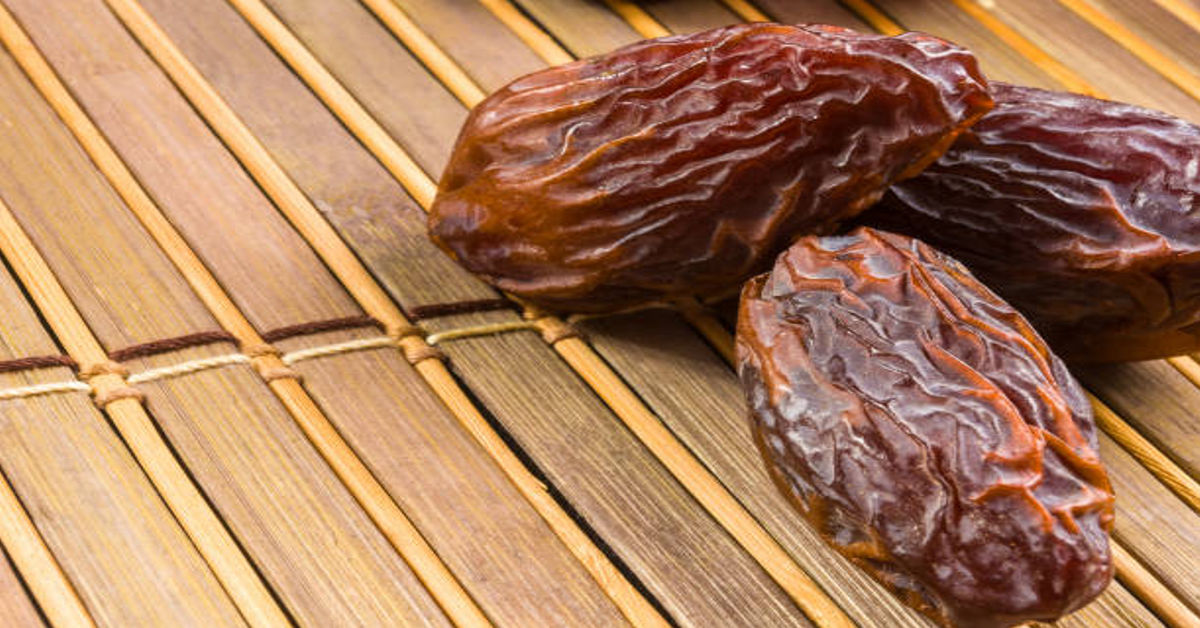Datiles, widely known in English as dates, are one of the oldest cultivated fruits in human history, having nourished civilizations for thousands of years and continuing to remain essential in global diets today. They grow on the date palm, a resilient tree capable of surviving extreme climates, especially the harsh deserts of North Africa and the Middle East. Datiles are unique because they provide not only high natural sweetness but also significant nutritional value, cultural symbolism, economic importance and versatile culinary use. For many communities, datiles were not just a fruit but a foundation of survival, particularly in environments where other crops could not thrive easily. Their long storage life allowed travelers, traders and nomadic tribes to carry them across continents, forming part of the backbone of early food trade routes.
In modern times, datile’s have successfully moved beyond traditional cultural consumption into a global superfood category. They are featured in health food stores, energy snacks, natural sweeteners, high-fiber diets and gourmet recipes. Their adaptability allows them to replace refined sugar, enhance baked goods, serve as nutritious snacks and provide dense energy to athletes, children and individuals needing sustained vitality. This article explores datile’s in deep detail, covering history, cultivation methods, nutrient composition, varieties, health advantages, economic significance, culinary applications, consumer demand trends and projected future developments.
Historical Background of Datiles
Datiles hold a deeply rooted connection with ancient civilizations, particularly those that developed in desert regions where water was limited and agricultural choices were restricted. Archeological evidence suggests that date palm cultivation began more than 6,000 years ago in Mesopotamia and Egypt. Ancient records show depictions of date palms in temple carvings, inscriptions, merchant records and religious scriptures, indicating their role as both food and symbolic markers of prosperity, fertility and spiritual blessing.
Their value traveled along caravan trade routes such as the Silk Road and trans-Saharan trade networks. Merchants transported datile’s packed tightly in sacks or pressed into cakes so they could last months without refrigeration, making them ideal for long journeys. As trade expanded, the palms were planted in new regions, including Persia, Libya, Morocco, Spain and later the Americas in the 18th and 19th centuries. By the time Spanish missionaries carried date palms to California and Mexico, datile’s had already developed dozens of regional varieties suited to different soil compositions and climates.
In many societies, datile’s were so crucial that they shaped agricultural planning, household food stocks and even tax systems. Some lands required farmers to contribute date harvests as a form of tribute. Kings and rulers maintained palm orchards as a demonstration of wealth and stability, since thriving date groves meant access to sustained food over generations.
Botanical Characteristics of the Date Palm
The date palm, scientifically known as Phoenix dactylifera, is a robust monocotyledonous tree adapted to heat, sandy soil and minimal rainfall. It grows best in hot climates with long dry seasons and abundant sunlight, making desert oases perfect environments for thriving palms. The tree can reach heights of 15 to 30 meters and has a crown of long feather-shaped leaves that may exceed five meters in length.
The date palm is dioecious, meaning male and female flowers occur on different trees. For commercial cultivation, growers often control pollination manually, transferring pollen from male flower clusters to female ones to ensure reliable fruit production. Once pollinated, clusters begin to swell and gradually transform into mature fruit over several months. Datiles grow in large bunches weighing up to 10 kilograms per cluster, with the number of clusters carefully managed to prevent breaking branches or lowering fruit quality.
Root systems of date palms spread outward rather than deep downward, enabling them to conserve moisture and withstand sand movement. Despite their tolerance to heat and poor soil, palms still require constant water access, leading farmers in ancient times to construct irrigation channels, wells and oasis settlements around palm groves.
Major Varieties of Datiles
Different regions produce distinct types of datile’s, each offering individual textures, sweetness levels, shapes and culinary applications. While there are hundreds of varieties globally, the most recognized commercial types include:
| Variety Name | Origin | Texture | Flavor Notes |
|---|---|---|---|
| Medjool | Morocco / Middle East | Soft and large | Caramel-like, rich, sweet |
| Deglet Noor | Algeria / Tunisia | Semi-dry | Light sweetness, firm |
| Zahidi | Iraq | Firm, medium sweet | Nutty, good for cooking |
| Barhi | Iraq | Soft, golden | Buttery and delicate |
| Halawy | Middle East | Soft | Honey-like flavor |
| Thoory | Algeria | Dry | Ideal for long storage |
| Khudri | Saudi Arabia | Semi-soft | Bold sweetness, chewy |
These varieties differ in cultivation methods, climate responses and consumer popularity, but all share the baseline characteristics that define datiles as a high-energy and nutrient-dense fruit.
Nutritional Composition of Datiles
Datiles are often misunderstood as merely sweet fruit, yet their nutritional profile is packed with vitamins, minerals, fibers and plant-based compounds beneficial for health. When compared to many processed snacks or refined sugars, datiles offer slow-releasing energy and natural nutrients rather than empty calories.
Nutrient Breakdown per 100 Grams of Datiles (Approximate)
| Nutrient | Amount |
|---|---|
| Calories | 280–320 kcal |
| Total Carbohydrates | 70–75 g |
| Dietary Fiber | 6–7 g |
| Natural Sugars | 60–65 g |
| Protein | 2–3 g |
| Fat | 0.2–0.5 g |
| Potassium | 600–700 mg |
| Iron | 1 mg |
| Calcium | 60 mg |
| Magnesium | 50–60 mg |
| Vitamin B6 | Present |
| Antioxidants | High concentration |
Datiles are also rich in phenolic compounds, carotenoids and flavonoids, which contribute to their antioxidant potential, allowing them to combat oxidative stress in the body. The high potassium content supports muscle contraction, blood pressure balance and heart rhythm regulation, while the fiber content assists in digestive health and blood sugar stability.
Health Benefits of Datiles
Datiles offer numerous health advantages supported by their natural composition and centuries of traditional medical use. Although the fruit is sweet, its fiber content helps slow the absorption of natural sugars, making it friendlier to blood glucose management when consumed moderately.
1. Natural Energy Booster
Datiles are ideal for individuals needing quick yet sustained fuel such as students, athletes, manual labor workers and individuals observing fasting traditions. Their glucose and fructose levels provide immediate energy while the fiber and micronutrients support sustained endurance over a longer period.
2. Digestive Health Support
Regular consumption of datiles helps promote bowel regularity and relieve mild constipation due to their high soluble fiber content. Fiber also nourishes beneficial gut bacteria and improves microbiome balance, enhancing digestive resilience.
3. Bone and Muscle Support
With minerals like magnesium, calcium and phosphorus, datiles contribute to strong skeletal and muscular systems. Potassium aids muscle contraction and reduces cramping, making datiles useful for active individuals.
4. Natural Antioxidant Protection
The antioxidants in datiles help the body neutralize free radicals which are associated with cell damage, aging processes and various chronic conditions.
5. Heart Health Contribution
Potassium assists in stabilizing blood pressure, while fiber supports cholesterol reduction. Together, they can contribute to healthier cardiovascular function.
6. Nutrient Support for Pregnancy and Child Health
In many cultures, pregnant individuals consume datiles as part of traditional nutrition due to their energy density and micronutrients. While more research continues, datiles have historically been associated with postpartum recovery strength and natural nourishment.
Datiles in Cultural and Religious Traditions
Many communities regard datiles as more than food. They possess deep symbolic meaning, spiritual interpretations and ceremonial importance. For example, in Islamic traditions, datiles are consumed to break the fast during Ramadan, not only for their nourishing energy but also because they are historically linked to the diet of the Prophet Muhammad. In Jewish tradition, dates are one of the seven sacred agricultural species mentioned in ancient texts and often appear during celebrations.
In Mediterranean cultures, datile’s symbolize abundance and fertility, and palm branches have been used in rituals, festivals and navigation. Even in modern Western societies, datiles have gained popularity as natural sweeteners in balanced diets, inspiring new cultural associations with wellness, sustainability and organic living.
Global Cultivation and Growing Conditions
Date palms require specific temperature ranges for optimal growth, including long hot summers, minimal rainfall during ripening and cool winters without severe frost. The combination of heat-tolerant leaves and thick trunk storage tissue allows palms to withstand harsh seasons.
To produce quality fruit, growers must ensure:
- Reliable irrigation systems
- Soil drainage to prevent root rot
- Proper hand-pollination in commercial orchards
- Pest management
- Controlled fruit thinning to maintain shape and size
Ideal Growing Climate Profile
| Environmental Factor | Optimal Condition |
|---|---|
| Temperature | Hot summers (32–45°C) |
| Rainfall | Low; irrigation needed |
| Soil | Sandy, alkaline, well-drained |
| Humidity | Low to moderate |
| Sunlight | Full sun exposure |
Countries such as Saudi Arabia, Iraq, Iran, Morocco, Egypt, Algeria, United States (California), United Arab Emirates and Tunisia remain major commercial producers due to their climate suitability and long agricultural heritage.
Post-Harvest Handling and Processing
Once harvested, datiles undergo careful treatment to maintain quality. Processing may include:
- Sorting by size and ripeness
- Drying or curing to reach optimal moisture levels
- Freezing for long-term storage
- Packaging to minimize damage during transport
Quality grading systems classify datiles based on appearance, moisture level, softness, color uniformity and presence of defects. Premium exports such as Medjool often receive meticulous hand-selection, making them more expensive but highly valued in international markets.
Economic Importance of Datiles
Datiles represent a livelihood foundation for millions of people. Farmers, packers, transporters, exporters, craft artisans and market vendors all benefit from the industry. In some nations, the date sector contributes to national GDP, foreign currency income and agricultural employment.
Economic Contributions at a Glance
| Economic Area | Datiles Impact |
|---|---|
| Agricultural employment | Supports rural communities |
| Export revenue | Contributes to national income |
| Food manufacturing | Used in syrups, snacks, baked goods |
| Tourism | Palm groves and processing tours |
Governments in date-producing countries frequently support initiatives to improve yield efficiency, develop sustainable irrigation solutions, protect heirloom varieties and strengthen global market competitiveness.
Culinary Uses of Datiles
Datiles shine in kitchens due to their versatile flavor profile, natural sweetness and compatibility with sweet and savory dishes. They are common in:
- Pastries, biscuits, cakes and breads
- Energy bars, protein snacks and smoothies
- Stuffed appetizers with nuts or cheese
- Middle Eastern rice dishes
- Gourmet sauces and chutneys
- Natural sweeteners in vegan cooking
Their ability to bind ingredients makes them valuable in no-bake recipes, while their caramel-like depth enhances baking aroma and taste.
Sample Table: Culinary Applications of Datiles
| Category | Example Uses |
|---|---|
| Snacks | Mixed nut blends, chocolate-coated dates |
| Baking | Date muffins, loaves, cakes |
| Savory | Tagines, pilafs, meat stuffing |
| Beverages | Smoothies, date milk, energy drinks |
| Condiment Products | Syrups, pastes, spreads |
Datiles as a Natural Sweetener Alternative
With increasing awareness of refined sugar’s impact on health, datiles have become a preferred natural sweetening agent. Their sweetness originates from natural fructose and glucose rather than processed sucrose. When blended into paste or syrup, datiles can sweeten desserts, salad dressings, sauces and beverages without requiring additives or artificial flavors.
Moreover, datiles contain fiber and micronutrients absent in processed sugar, enabling them to deliver sweetness while supporting metabolic health. This shift has fueled rising commercial production of products like:
- Date sugar
- Date paste
- Date syrup
- Date molasses
These items are widely used in gluten-free and vegan markets.
Role of Datiles in Modern Diet Trends
The global expansion of wellness, whole foods and diet-aware lifestyles has placed datiles in an advantageous position. They align with numerous popular diet philosophies including:
- Mediterranean diet
- Vegan lifestyles
- Paleo-aligned natural eating
- Whole food programs
- Balanced sport nutrition approaches
Even individuals seeking weight management include datiles in moderation because their fiber supports satiety and reduces overeating tendencies when used thoughtfully.
Production Challenges and Sustainability Considerations
While date palms are inherently hardy, modern producers face unique challenges including:
- Water scarcity
- Rising temperatures due to climate change
- Soil salinity in desert agriculture
- Pests such as the red palm weevil
- Market competition among producers
To support long-term sustainability, many growers now implement:
- High-efficiency drip irrigation
- Recycled water systems
- Soil mineral balancing
- Integrated pest management
- Genetic conservation programs
Sustainable date farming ensures future generations can continue benefiting from the fruit culturally and economically.
Future Prospects for the Datiles Industry
Datiles are likely to grow further in global popularity due to several converging trends:
- Rising demand for natural sweeteners
- Expanding interest in Middle Eastern and Mediterranean cuisine
- Growth in vegan and organic products
- Increased awareness of the fruit’s nutritional benefits
- Development of date-based processed foods
Research and technological advancements in agricultural engineering may also enhance productivity, fruit quality and water efficiency, further strengthening global supply chains.
Conclusion
Datiles are far more than a sweet desert fruit; they are the product of a rich agricultural legacy that shaped civilizations, influenced trade systems, sustained communities and adapted remarkably to shifting dietary needs across centuries. Their nutritional advantages, geographic resilience and exceptional culinary versatility have enabled them to evolve from ancient travel food into a globally appreciated superfood category. Datiles continue to support economic systems, culinary creativity, agricultural heritage and personal health around the world. As modern food culture grows more attentive to natural ingredients, sustainability and authentic flavors, datiles stand positioned to remain a staple in global diets for many generations to come.
FAQs
1. Are datiles the same as regular dates?
Yes, “datiles” is simply the Spanish word for dates, referring to the fruit of the date palm, though local varieties and preparation styles may differ.
2. Do datiles provide nutritional benefits?
Datiles are rich in fiber, potassium, natural sugars, antioxidants, vitamins and minerals, offering sustained energy and digestive support.
3. Can datiles replace refined sugar in cooking?
Yes, datiles can be converted into natural paste, syrup or small chopped pieces to sweeten dishes while providing additional nutrients.
4. How long can datiles be stored?
Depending on moisture levels, properly dried datiles can be stored for months without refrigeration, and even longer when frozen in sealed containers.
5. Are datiles suitable for modern diet trends?
Datiles fit into many modern food plans including vegan, Mediterranean, natural whole-food, dairy-free and plant-based nutritional systems.









